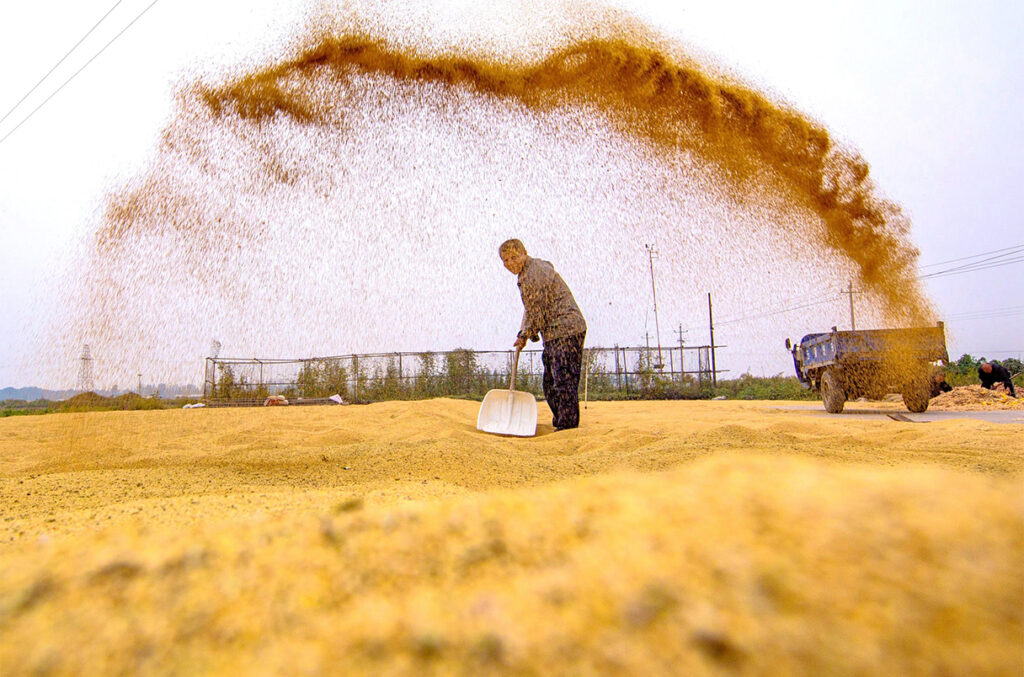Agriculture gave rise to one of world’s most mysterious language families
According to the broadest examination of linguistic, archaeological, and genetic data from around a dozen nations across Asia, a single grain of millet may have given birth to one of the most mysterious—and widespread—language families on Earth.
The Transeurasian languages, sometimes known as Altaic, include the languages of Siberia, Mongolia, Central Asia, and possibly Japan and the Korean Peninsula. The new study suggests the language family arose in northeastern China 9000 years ago, expanding with the spread of agriculture.
“It’s convincing,” says Peter Bellwood, an archaeologist at Australian National University who wasn’t involved with the work. “Languages don’t just go wandering off by themselves; they expand because the people who speak those languages spread.” Farming, he adds, is a strong reason for such an expansion.

The origins of so-called Transeurasian languages—about 80 at the highest count—are hotly debated. Some linguists believe they sprang from the same source, but others say extensive borrowing between ancient languages explains why certain sounds, terms, and grammatical features are common among many tongues, from Turkish to Tungusic.
Some researchers had suggested the family arose about 5000 years ago with nomadic shepherds in Central Asia.
Martine Robbeets, an archaeolinguist at the Max Planck Institute for the Science of Human History, has long believed the Transeurasian languages belong to one family. To bring new evidence to the debate, she teamed up with linguists, archaeologists, and geneticists from China, Japan, Russia, and South Korea to build an extensive linguistic family tree for languages across Eurasia.
They focused on what Robbeets calls “culture-free” vocabulary, including words for basic items such as “field,” “pig,” and “house.”
The team used similarities between such basic terms and known historic shifts in sound to reconstruct an ancestral language, Proto-Transeurasian. Their family tree, which went back approximately 9200 years, suggested a common origin for dozens of words related to the growing and harvesting of a grain known as broomcorn millet. “That tells us that the speakers of Proto-Transeurasian were … farmers probably concentrating on millet,” Robbeets says.
Next, archaeologists examined data from 255 sites across Central and Eastern Asia dating from about 8500 to 2000 years ago. Previous research had found fully domesticated millet arose in China’s Liao River Valley by at least 6000 years ago.
The researchers tracked how similarities between nearby sites in pottery styles, burial styles, and the use of the same domesticated plants clustered together over time. They followed the spread of these “cultural packages” as they moved out of the Liao River Valley and diverged and meshed with other cultures over time. That spread roughly matched the march of the hypothesized Proto-Transeurasian language.
Finally, geneticists analyzed DNA from 23 individuals who lived between 300 and 9000 years ago in what are now Siberia, Mongolia, China, South Korea, Japan, and Taiwan.
They used computer algorithms to predict how those individuals were related to one another and to 2000 modern people whose genomes have been uploaded to genetic databases. Taken together, the three strands of evidence suggest a shared common ancestor for modern-day speakers of Japonic, Koreanic, Tungusic, Mongolic, and Turkic languages: farmers living in the Liao River Valley approximately 9000 years ago, the researchers write today in Nature.
READ ALSO: THIS IS THE WORLD’S OLDEST CONTINUALLY OPERATING LIBRARY, WHERE LOST LANGUAGES HAVE BEEN FOUND
Over time, ancient farmers got better at growing millet, and their population expanded, Robbeets says, sending their language out into the world. Eventually, their populations split and merged with other groups across Eurasia, developing distinct languages and cultures, but retaining a still-recognizable linguistic backbone.
Melinda Yang, a geneticist at the University of Richmond who studies the genetic history of ancient East Asian populations, says she’d like more information on how the researchers calculated the relatedness among ancient individuals whose DNA they sampled. Still, she is impressed by the sheer amount of data the team synthesized in the new paper, and says it seems to mostly agree with the existing data from linguistics, archaeology, and ancient DNA.
She broadly agrees with “the large brushstrokes” laid out by the study. At the same time, she adds, the very scope of the paper means it will take time for researchers to wrap their heads around the findings. “It’s not something you can read in an hour and fully understand.”





